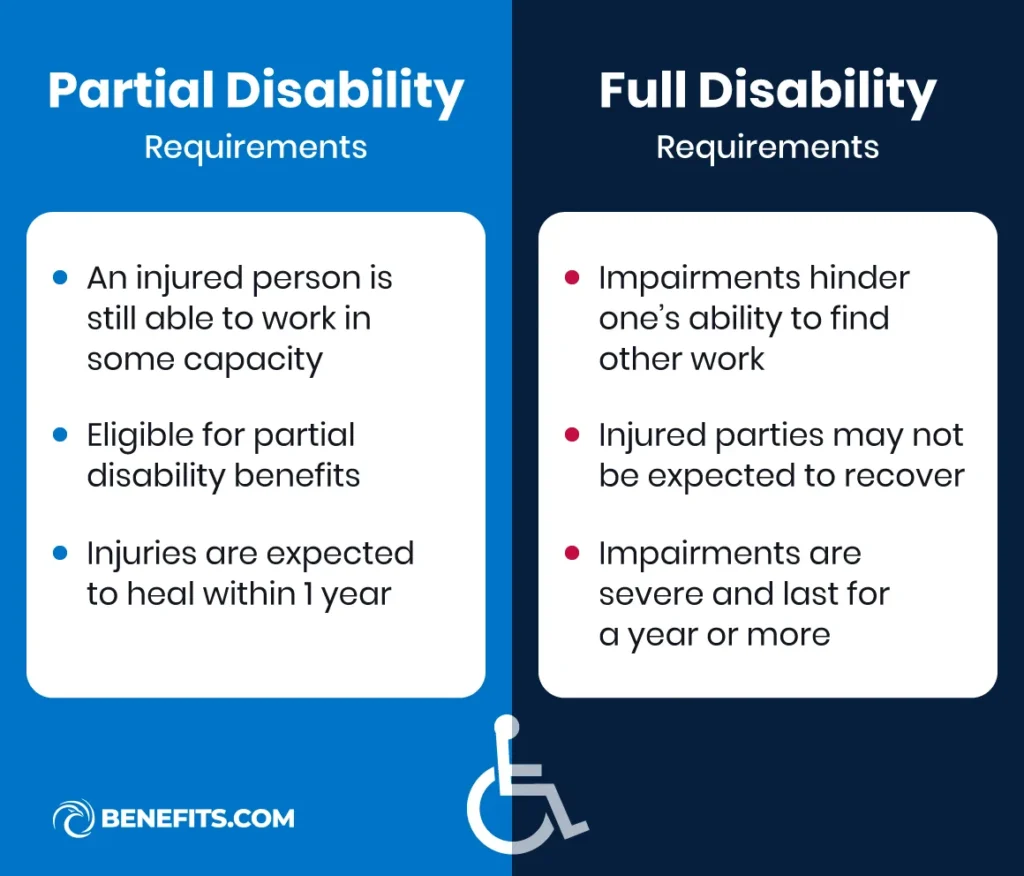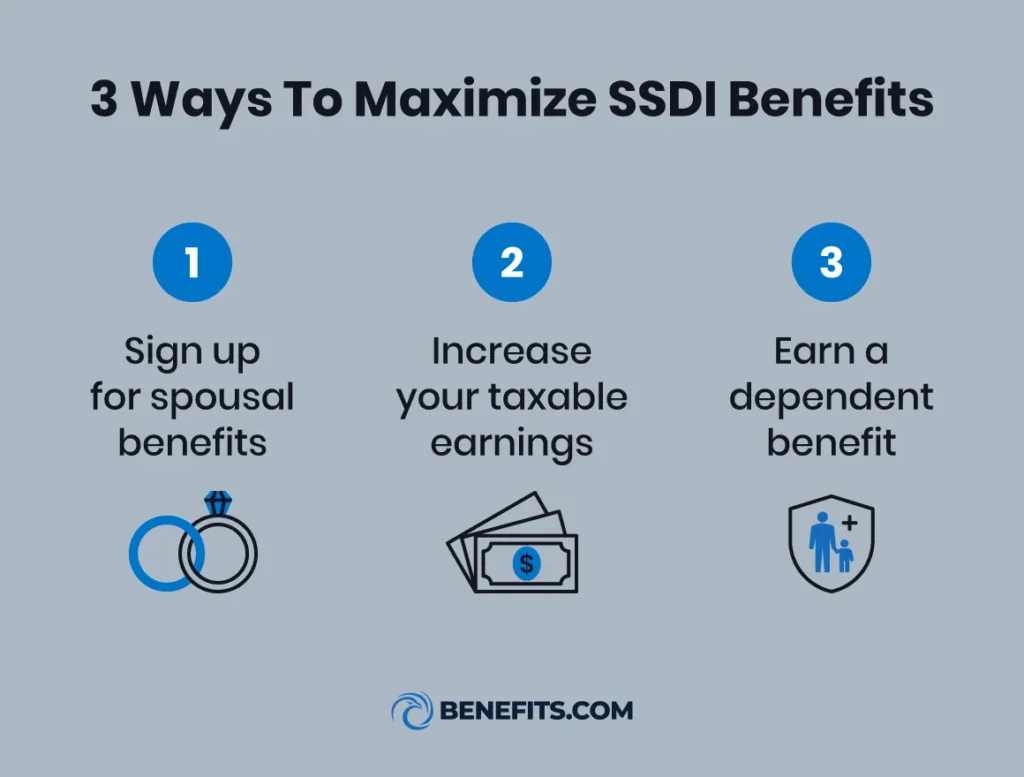The “5-year rule” is a commonly used term to describe the eligibility criteria for Social Security Disability Insurance (SSDI) benefits.
While the Social Security Administration (SSA) hasn’t outlined an official five-year rule, the concept primarily encompasses two key aspects: the work credit requirements and the waiting period for SSDI benefits.
Understanding both implications of the so-called five-year rule can help you get all the Social Security benefits you may be entitled to. This guide will explain how these rules can influence your total monthly benefits and share resources to help you navigate the application process.
What Are the Eligibility Requirements for Social Security?
If a disability hampers a person’s ability to secure gainful employment, they may qualify for Social Security disability benefits. Disabilities can be permanent or temporary, and both have separate payout rates.
You must meet the following requirements to qualify for Social Security benefits:
- You have been diagnosed with an illness or injury that is either terminal or expected to last 12 months or more.
- Based on your age, you have recently earned enough credits through jobs covered by Social Security. (This is something you’ll probably need to check based on your specific age, work experience, and field of work.)
- Your illness or injury prevents you from working your previous job or any other job that pays over a certain amount per month ($1,550 in 2024). This is the threshold for substantial gainful activity (SGA).
You must submit a claim to the Social Security Administration (SSA) to start the application process for benefits. The SSA will examine your case and approve or deny your application within three to four months. During this time, you can bolster your claim by submitting documents that verify your work history and explain your condition.
If a person receives disability benefits and then stops collecting them, they normally have to wait for a predetermined time (up to six months in some cases) to reapply. For example, if you received temporary disability benefits and then recovered, you’d previously have to wait to reapply.
The five-year rule was established to streamline the reapplication process for eligible parties.

What Is the Social Security Disability 5-Year Rule?
As previously mentioned, there is no official “five-year rule.” The Social Security disability five-year rule can refer to two different things:
- The first rule is intended to help people who need Social Security benefits five years or less after they’ve returned to work.
- The second rule relates to the SSA’s decision to review the last five years of a person’s work history when approving or denying applications for SSDI benefits. To be eligible for expedited reinstatement, your income must fall below the SGA level in the last 5 years, and the disability must be the same or related to your original claim.
How Does the 5-Year Rule Affect SSDI Eligibility?
The five-year rule can affect your Social Security Disability Insurance (SSDI) eligibility by influencing the value of your work credits. You earn work credits by holding a position where portions of your paychecks are added to the federal Social Security Trust Fund.
These contributions previously had to occur within the last 10 years. However, the five-year rule can help you meet the minimum amount of work time you’d need at age 31 or older to qualify for SSDI benefits.
You can earn a total of up to four credits per year if you regularly devote a portion of your paychecks to Social Security.
How Many Credits Do You Need to Qualify for SSDI?
Factors like age, income, and health condition determine the credits you need. The SSDI pay chart reflects these requirements:
- If you are under 24, you will need to have at least 1.5 years of work and six or more work credits to qualify.
- If you are between 24 and 30, you will need 2-4.5 years of work and 8-18 work credits.
- If you are 31-42, you will need five years of work and 8-20 work credits.
- For every two years older than 42 you are, your required work credits will go up by two as well.
Exceptions and Considerations: Understanding the Five-Year Rule Variations
Your age at the time of application is one of the greatest considerations for the SSA when determining your eligibility. Younger applicants need much less experience and fewer credits to potentially qualify (1.5 years of work history at 24 compared to five years at 42).
Work credit expiration rules are also important considerations. Your credits expire five years after you stop working.
Navigating the Application Process: Tips for Applying for SSDI Benefits
Below is a step-by-step breakdown of the SSDI application process. Consult this guide before applying to minimize the likelihood of making mistakes on your submission.
Step 1: Review Eligibility Requirements
Ensure you meet the eligibility requirements for SSDI beforehand. You can do this by reviewing the SSA’s current year guidelines and meeting with legal advisors who can help you through the application process.
The eligibility requirements for SSDI include:
- Your disability renders you unable to perform work at the SGA level.
- You have accumulated enough work credits for your age group.
- Your medical condition meets the SSA’s definition of a severe impairment.
Step 2: File Your Claim
File your claim as soon as possible, since an initial claim has a five-month waiting period before you can start receiving benefits. Although you’ll need to wait for the benefits to arrive, an accepted application will allow you to receive backdated payments for those five months.
Step 3: Gather Relevant Documents
You’ll want to have medical documents that verify your disability or injury to make a strong case for why you can no longer work. Gaining a proof of disability letter from your doctor can greatly strengthen your claim.
You’ll also want to present recent pay stubs and tax documents during the application process. Disability lawyers know what you need to look for and can help you find information that may be missing.
Step 4: Comply With Treatment Plans
Continue to participate in all prescribed treatment plans that are intended to help with your disability. Sticking with plans outlined by your health care provider can build your case for SSDI benefits. Ask your health care professionals to provide a complete record of your compliance with their treatment plans.
Step 5: Check Into Supplemental Security Income (SSI)
SSI is an alternative option that may be available for people with certain disabilities who do not qualify for normal SSDI. This disability benefit is another approach that you might be able to take if an SSDI benefit is not available to you.
Step 6: See if You’re Eligible for Veterans Disability
Veterans Affairs (VA) disability may also be available to you in addition to your Social Security benefit. These two kinds of disability benefits can overlap, so your claims with the SSA and VA can be accepted at the same time if you qualify.
Maximizing Benefits: Strategies for Optimizing Social Security Disability Claims
When you follow your recommended medical interventions and keep track of medical and legal documents, you’ll have a better case and a better chance of securing the maximum monthly benefit amount.
If your application gets denied, or you feel your benefits are inadequate, you can appeal the decision within 30 days after you’ve received notice from the SSA.
Seek Legal Assistance
An experienced attorney or advocate can help guide you through the entire application process. Look for legal representatives or groups that specialize in disability claims to assist with the initial application and any issues or delays that might surface.
Having legal representation will also keep you informed about any possible changes that are made to SSDI rules. Like any government service, SSDI is subject to change with time and new laws, and these changes might affect your claim and eligibility if and when they occur.
Review Your Finances
Be aware of how any additional income or other financial situations might affect your SSDI claim. For example, SGA can potentially make you ineligible for SSDI in the government’s eyes.
Temp jobs, part-time employment, freelance work, or income that pushes you past the SSA’s $1,550 per month threshold can render you ineligible for SSDI benefits. Financial planning is a great way to potentially maximize your benefits and still generate some additional income.
Earn a Dependent Benefit
Dependent benefits allow the spouses and children (ages 18 and below) of SSDI recipients to receive monthly payments from the SSA. Spousal benefits are also specifically available for the partners of recipients who are age 62 or older or who are disabled.
Dependent and spousal benefits normally amount to 50% of the original recipient’s benefits. Moreover, the maximum family benefit is 85% of the original recipient’s average monthly earnings.
Someone can receive dependent and spousal benefits in certain circumstances (i.e. a spouse who cares for a child with a qualifying disability).
Raise Your Taxable Earnings
The higher your taxable earnings, the more you can contribute to the Federal Social Security Trust Fund. The maximum taxable earnings limit in 2024 is $168,600. Any income that you make over that amount won’t be subject to Social Security tax.

Get Help Applying for Social Security Benefits with Benefits.com
The Social Security disability five-year rule makes it simpler for some individuals to apply for benefits, but you still might need help during the process. Benefits.com is here to help you understand eligibility requirements so you can get the benefits you deserve.
Take our Social Security benefits quiz to see if you qualify.
Social Security Disability 5-Year Rule FAQ
Understanding the Social Security disability five-year rule can streamline the application process, especially if you’re reapplying after working. Look at some of the most common questions we’ve encountered to get help with your situation.
What Is the Max on Social Security Disability?
$3,822 a month is the maximum amount eligible parties can receive in 2024. This is a $195 increase from $3,627, the highest monthly payout in 2023. Individuals with 40 credits who earned 20 credits over the last 10 years typically meet the criteria for maximum benefits.
What Happens if You Don’t Meet the Social Security 5-Year Rule?
You likely won’t be eligible for SSDI, but you can still qualify for SSI. The requirements are less stringent and the maximum federal benefit payout is $943 per month.
How Does Part-Time Work Affect Your Eligibility Under the 5-Year Rule?
Part-time workers may still be eligible for SSDI benefits as long as they’ve earned the necessary credits. You need to earn $6,920 to earn the maximum four credits in a year, which works out to $1,730 for one credit each quarter.
Does the 5-Year Rule Apply to Retirement Benefits?
No, though there is a different “five-year rule” that sets a waiting period before you can withdraw funds from your retirement accounts.
Are There Special Considerations for the 5-Year Rule for Young Workers?
Yes, younger workers need much less work history (1.5 years) and only 20 credits to be eligible for disability benefits. Those ages 24-30 need between 2 and 4.5 years of work and 8 to 18 work credits. Individuals in the 31-42 range will need five years of work history and 8 to 20 work credits.
Those above the age of 42 will have their work history and credit requirements increase every two years.
At Benefits.com, we are here to help you navigate the process and receive the benefits you deserve. Begin today by taking our free eligibility quiz.
 Benefits.com Advisors
Benefits.com Advisors
With expertise spanning local, state, and federal benefit programs, our team is dedicated to guiding individuals towards the perfect program tailored to their unique circumstances.
Rise to the top with Peak Benefits!
Join our Peak Benefits Newsletter for the latest news, resources, and offers on all things government benefits.





















